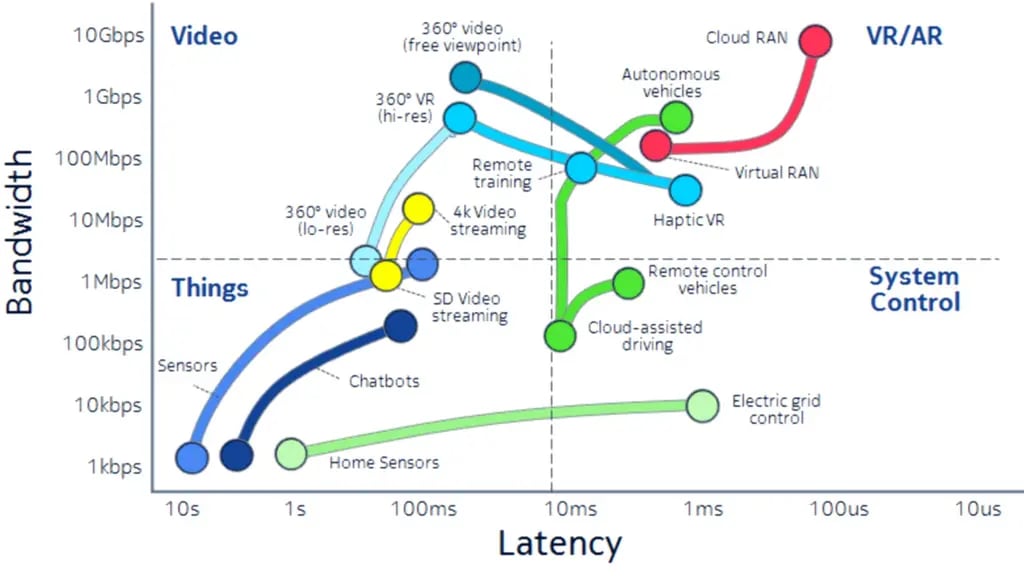The rational exuberance of 5G

Over the past year, the momentum that has built around 5G wireless networks is quite remarkable.
But it is a valid question whether it is rational, or irrational, or whether it is merely a symptom of the ever-present need for ‘new news’ that pervades modern life. This is particularly true in the information and communications technology (ICT) industry, as the most frequent measure in and of this industry is one’s ‘future currency’ – the ability to position oneself for leadership in the next technology cycle. And with the ICT space being intrinsically defined by hardware and software development lifecycles on the order of 18 months or less (the classic Moore’s Law for CMOS device lifecycle), it should be equally true that the networking portion of this industry, which is built upon these foundations, is governed by a similar renewal cycle. Indeed the transistor was invented in Bell Labs in 1948 precisely to allow a new generation of digital networks and systems to be created. However, the networking industry has traditionally operated on a decade-based renewal cycle, for reasons I discuss below. If this pattern were to continue, the ‘natural’ rhythm of networking evolution would result in the first deployments of 5G networks starting in 2020, approximately a decade after the first major LTE (4G) network deployments. So, on the face of it, the current momentum towards first 5G deployments in 2017-2018 would seem if not irrational at least unusually ‘exuberant’. But I believe there are two key rational factors that are driving the winds of change in our industry, one a technological ‘wind’ and one a business ‘wind’, driven by human need.
The technological wind
As mentioned above, the networking industry has renewed itself on a decade basis for the last 30 years, as seen from the sequential commercial deployment eras for the major evolutions in wired and wireless technologies. The origin of this ‘unnaturally natural’ rhythm can perhaps be understood by the fact that a large number of factors contribute to network renewal, and the sum of those factors invariably tends towards a 10 year period, driven in large part by factors that are not technological but human or business process related.
It is apparent that only the initial prototype and commercial product development stages are dominated by technological innovation and these stages follow ‘Moore’s Law’ type periods (typically multiple such periods). But following those stages are standardization process stages that are largely driven by building industry consensus around the requirements and specifications and the spectrum bands to be used, which is then followed by a network design, verification and deployment phase that is largely driven by business and construction processes.
So, what is different in the coming 5G era? Which of these stages will – or could – change? The short answer is that potentially all of them could change for the following reasons:
- The combination of the prototype implementation and product development stages can be accelerated with the advent of programmable hardware (both general purpose and specialized processors), the separation of control and bearer functions by software-defined networking, and virtualization (and cloudification) of the software, as well as judicious use of open source code and designs
- The change described in 1) will drive a concomitant change in the standardization process, by allowing deployment and testing of pre-standard solutions that can be used to refine the specifications to focus on those that have material value. These pre-standards solutions can then be re-programmed or reconfigured as the final standards are set.
- The advent of 1) together with increased adoption of DevOps and ‘Lean Ops’ methodologies will also accelerate the network verification and deployment phase due to the ability to continuously integrate, test and optimize the deployment to meet the desired performance.
Looking across these three factors, it is reasonable to posit an acceleration of at least 30% initially, which would reduce the natural decade deployment rhythm to ~7 years. Interestingly, this would place the first 5G deployments in 2017 or early 2018, consistent with the current market momentum we are seeing. So, the conclusion of this simple analysis should be that the technological ‘wind’ is indeed a prevailing one. But in the end, there has to be a similarly prevailing business imperative to declare the movement a ‘rational’ one.
The business wind
Around the time that LTE was first being deployed researchers in Bell Labs outlined their view of the requirements and goals for 5G networks from a technology perspective. They framed the goals in terms of bandwidth and users served, and identified 4 User-Bandwidth regions. In short, the authors argued that all prior network generations had been focused on serving a User-BW regime of 100kbps to 100Mbps and a maximum of a couple of hundred users (R1). But when referenced to the entire User-BW space available based on physical and information-theoretic limits (the so-called Shannon limit), they identified 3 other regions that remained to be explored and that should be the primary areas of exploration for 5G. These regions were:
- R2: Gbps of BW and approximately the same number of users
- R3: Approximately the same BW range, but 1000s of users
- R4: Less BW and the same number of users
Furthermore, there was a clear understanding that the R3 region would be necessary to support massive machine-to-machine (M2M) communication, due to the much larger number of machine ‘users’ that would appear compared to people ‘users’, and that R4 would be required for the operation of systems that required high reliability and/or low latency but exchanged relative little data. R2 was less well understood in terms of a clear use case at the time.
In hindsight this paper was truly prescient since these domains of interest have indeed become the definitional ones for 5G, as it has become increasingly clear that these domains are not only technological ‘value’ but also represent domains of new business value.
R3 and R4 are exactly as imagined, and are consistent with now commonly agreed 5G application categories of ‘massive machine type connectivity’ and ‘critical machine communications’, respectively. R2 is now commonly known as ‘extreme mobile broadband’ that can now be better understood as being driven in large part by the need for 10x or more video bandwidth for the truly immersive video experiences characteristic of virtual reality (VR) and augmented reality (AR) applications that have become accessible with the availability of (relatively affordable) new VR/AR capture and display devices and headsets.
This view of these domains and the attendant new business value is shown below, in terms of the Latency-BW space in which they exist. As shown in the figure, there are a large number of new applications that span the Latency-BW space, ranging from simple sensory devices and ‘bots’ (R3 type applications), to ultralow latency system control applications such as assisted driving and remotely controlled vehicles, or even utility network control (R4 type applications), to higher bandwidth 4k and 360 degree video streams (R1 type applications), and, last, new haptic and augmented and virtual reality applications which require both massive bandwidth and low latency (which can be associated with R2 type applications).

Illustration of the different domains of new value underpinned by new requirements in BW and latency.
It is also interesting to note that this R2 VR/AR domain is the most demanding in terms of BW and Latency requirements, and it is also the domain required to support virtual RAN (L2/L3 virtualized) or Cloud RAN (L1/2/3 hosted in the cloud). Furthermore, in order to achieve such latencies, the cloud infrastructure cannot be more than 100km from the end device consuming the application, due to the finite speed of light, which can only traverse ~100km (round trip) in the 1 ms that is available for the networking portion of such applications.
This last observation has profound implications, as it means that the future mobile network must be comprised of a highly distributed edge cloud architecture, and that very same architecture will enable the most demanding and highest value future applications. This rare coincidence of networking need and application needs will, we believe, rebalance the economics of the ICT industry, as described in Bell Labs Future X Network book (add reference).
In conclusion, our analysis of past, current and future trends in technology and network evolution, suggests that the increased momentum we are seeing around 5G network deployments relative to prior eras is the result of a coincidence of prevailing winds of both technological and business (human) value, and is therefore a case of ‘rational exuberance’ about the future.
